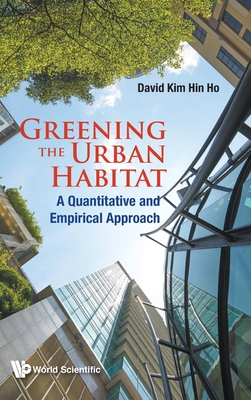This book is a good reference book for city planners, architects and civil engineers involved in the conceptualisation, design and building of urban habitations, who aspire to increase the liveability of their cities. It introduces the Singapore Green Plot Ratio (GnPR) as an Urban Planning Metric to promote the widespread and intensive use of greenery for new and existing buildings in towns and cities like Singapore - a former third world city that has transformed into one of the world's most liveable metropolises.Increasing urban greenery has been observed to enhance the quality of our built environment, and in turn, the quality of life of its inhabitants. The book shows readers how to do so using the GnPR, which it presents as an important urban complement of the leaf area ratio (LAI) concept, through an in-depth discussion of three key aspects of the GnPR. It proposes optimal levels of GnPR for various land-use types and how these levels are benchmarked against current levels of greenery provision; stipulates the greenery quantum which encourages the concentration of some plants, especially native trees and certain local species; and advocates the development of ecological or natural landscapes over manicured gardens. The book also discusses the impact of various levels of GnPR provision with the inevitable capital and maintenance costs of greening built environments, and how they affect the application of the GnPR guidelines.
This book is a good reference book for city planners, architects and civil engineers involved in the conceptualisation, design and building of urban habitations, who aspire to increase the liveability of their cities. It introduces the Singapore Green Plot Ratio (GnPR) as an Urban Planning Metric to promote the widespread and intensive use of greenery for new and existing buildings in towns and cities like Singapore — a former third world city that has transformed into one of the world's most liveable metropolises.
Increasing urban greenery has been observed to enhance the quality of our built environment, and in turn, the quality of life of its inhabitants. The book shows readers how to do so using the GnPR, which it presents as an important urban complement of the leaf area ratio (LAI) concept, through an in-depth discussion of three key aspects of the GnPR. It proposes optimal levels of GnPR for various land-use types and how these levels are benchmarked against current levels of greenery provision; stipulates the greenery quantum which encourages the concentration of some plants, especially native trees and certain local species; and advocates the development of ecological or natural landscapes over manicured gardens. The book also discusses the impact of various levels of GnPR provision with the inevitable capital and maintenance costs of greening built environments, and how they affect the application of the GnPR guidelines.
Get Greening The Urban Habitat: A Quantitative And Empirical Approach by at the best price and quality guranteed only at Werezi Africa largest book ecommerce store. The book was published by World Scientific Publishing Co Pte Ltd and it has pages. Enjoy Shopping Best Offers & Deals on books Online from Werezi - Receive at your doorstep - Fast Delivery - Secure mode of Payment
 Jacket, Women
Jacket, Women
 Woolend Jacket
Woolend Jacket
 Western denim
Western denim
 Mini Dresss
Mini Dresss
 Jacket, Women
Jacket, Women
 Woolend Jacket
Woolend Jacket
 Western denim
Western denim
 Mini Dresss
Mini Dresss
 Jacket, Women
Jacket, Women
 Woolend Jacket
Woolend Jacket
 Western denim
Western denim
 Mini Dresss
Mini Dresss
 Jacket, Women
Jacket, Women
 Woolend Jacket
Woolend Jacket
 Western denim
Western denim
 Mini Dresss
Mini Dresss
 Jacket, Women
Jacket, Women
 Woolend Jacket
Woolend Jacket
 Western denim
Western denim
 Mini Dresss
Mini Dresss





































